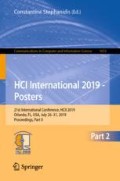Abstract
Although GPS-based localization systems are widely used outdoors, they are inapplicable in indoor settings, where GPS signals are mostly unavailable. Existing research, however, has not found a feasible solution to obtain indoor positioning information. Existing indoor localization approaches either suffer from low accuracy or rely on expensive infrastructure and dedicated devices. In this study, we propose a novel picture fingerprinting-based indoor localization approach for power wheelchair users, who suffer from more restricted mobility. A location is represented by pictures (i.e., picture fingerprints) taken from different angles at the location. Localization is achieved by matching a locating picture, taken during wheelchair navigation, with the picture fingerprints of locations in a building. State-of-the-art deep learning techniques were employed to match locating and fingerprinting pictures. Experimental results showed that the proposed approach achieved accurate location recognition. Compared to existing indoor localization approaches, our proposed approach neither relies on dedicated infrastructures and devices nor requires labor-intensive maintenance and, therefore, provides a new direction for achieving feasible and accurate indoor localization.
Access this chapter
Tax calculation will be finalised at checkout
Purchases are for personal use only
References
Jiang, Y., Pan, X., Li, K., Lv, Q., Dick, R.P., Hannigan, M., et al.: Ariel: automatic wi-fi based room fingerprinting for indoor localization. In: Proceedings of the 2012 ACM Conference on Ubiquitous Computing, pp. 441–450 (2012)
Zafari, F., Gkelias, A., Leung, K.: A survey of indoor localization systems and technologies. arXiv preprint arXiv:1709.01015 (2017)
Kumar, P., Reddy, L., Varma, S.: Distance measurement and error estimation scheme for RSSI based localization in Wireless Sensor Networks. In: 2009 Fifth International Conference on Wireless Communication and Sensor Networks (WCSN), pp. 1–4 (2009)
Zhang, C., Subbu, K.P., Luo, J., Wu, J.X.: GROPING: geomagnetism and crowdsensing powered indoor navigation. IEEE Trans. Mob. Comput. 14, 387–400 (2015)
Link, J.A.B., Smith, P., Viol, N., Wehrle, K.: FootPath: accurate map-based indoor navigation using smartphones. In: 2011 International Conference on Indoor Positioning and Indoor Navigation (IPIN), pp. 1–8 (2011)
Schroff, F., Kalenichenko, D., Philbin, J.: FaceNet: a unified embedding for face recognition and clustering. In: Proceedings of the IEEE Conference on Computer Vision and Pattern Recognition, pp. 815–823 (2015)
Haverinen, J., Kemppainen, A.: Global indoor self-localization based on the ambient magnetic field. Robot. Auton. Syst. 57, 1028–1035 (2009)
Storms, W., Shockley, J., Raquet, J.: Magnetic field navigation in an indoor environment. In: 2010 Ubiquitous Positioning Indoor Navigation and Location Based Service, pp. 1–10 (2010)
Ahmetovic, D., Murata, M., Gleason, C., Brady, E., Takagi, H., Kitani, K., et al.: Achieving practical and accurate indoor navigation for people with visual impairments. In: Proceedings of the 14th Web for All Conference on the Future of Accessible Work, p. 31 (2017)
Ganti, R.K., Ye, F., Lei, H.: Mobile crowdsensing: current state and future challenges. IEEE Commun. Mag. 49, 32–39 (2011)
Carboni, D., Manchinu, A., Marotto, V., Piras, A., Serra, A.: Infrastructure-free indoor navigation: a case study. J. Locat. Based Serv. 9, 33–54 (2015)
Pan, S.J., Yang, Q.: A survey on transfer learning. IEEE Trans. Knowl. Data Eng. 22, 1345–1359 (2010)
Acknowledgement
This work was supported by the National Institute of General Medical Sciences of the National Institutes of Health under award number P20GM103447. The content is solely the responsibility of the authors and does not necessarily represent the official views of the National Institutes of Health.
Author information
Authors and Affiliations
Corresponding author
Editor information
Editors and Affiliations
Rights and permissions
Copyright information
© 2019 Springer Nature Switzerland AG
About this paper
Cite this paper
Fu, J., Wiechmann, P., Ong, M., Qian, G., Zhao, D.Y. (2019). A Novel Picture Fingerprinting Technique to Provide Practical Indoor Localization for Wheelchair Users. In: Stephanidis, C. (eds) HCI International 2019 - Posters. HCII 2019. Communications in Computer and Information Science, vol 1033. Springer, Cham. https://doi.org/10.1007/978-3-030-23528-4_38
Download citation
DOI: https://doi.org/10.1007/978-3-030-23528-4_38
Published:
Publisher Name: Springer, Cham
Print ISBN: 978-3-030-23527-7
Online ISBN: 978-3-030-23528-4
eBook Packages: Computer ScienceComputer Science (R0)

